Home>Dining>Tableware>How Can You Decorate A Combined Living And Dining Room?
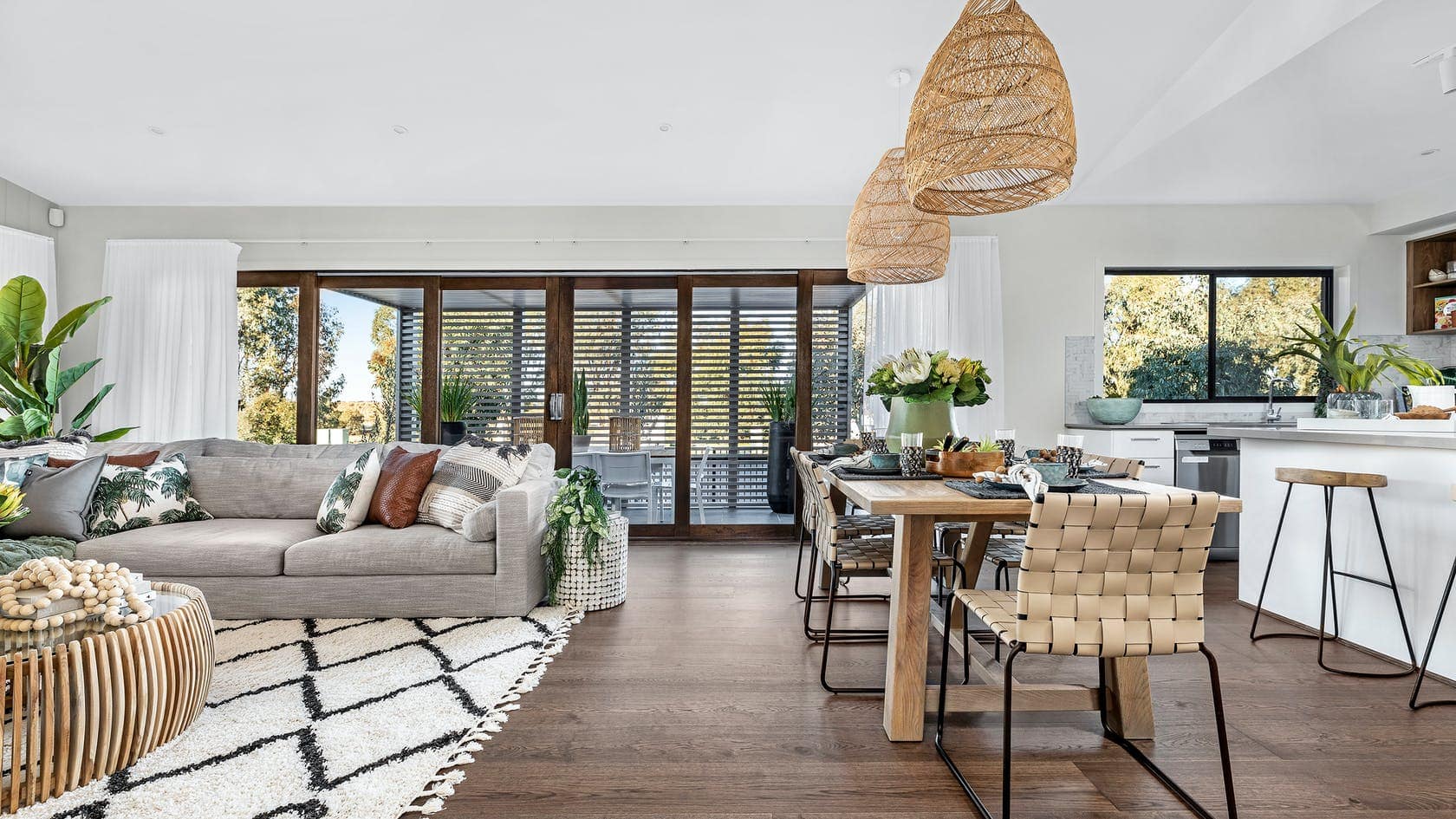

Tableware
How Can You Decorate A Combined Living And Dining Room?
Modified: October 28, 2024
Learn how to beautifully decorate your combined living and dining room with the perfect tableware, creating a stylish and functional space for entertaining and everyday activities.
(Many of the links in this article redirect to a specific reviewed product. Your purchase of these products through affiliate links helps to generate commission for Storables.com, at no extra cost. Learn more)
Tips for Decorating a Combined Living and Dining Room
Decorating a combined living and dining room can be a challenging task as you strive to create separate functional areas while maintaining a cohesive and harmonious space. Whether you’re dealing with a small studio apartment or an open floor plan, here are some tips to help you make the most of your combined living and dining room:
Key Takeaways:
- Create distinct zones in a combined living and dining room by using furniture placement, room dividers, different flooring or lighting, and coordinating color schemes to maintain a cohesive yet visually separate space.
- Incorporate versatile furniture, effective storage solutions, and decorative elements to maximize functionality and style in a combined living and dining room, while paying attention to scale, proportion, and lighting for a balanced and harmonious design.
Read more: How To Divide A Living Room And Dining Room
Define Separate Zones
Start by visually separating the living and dining areas to create distinct zones. You can achieve this by using different paint colors, wallpaper, or decorative room dividers. In addition, arranging furniture in a way that clearly defines each area can also be helpful.
Choose a Cohesive Color Scheme
To create a cohesive look, choose a color scheme that flows seamlessly across both the living and dining areas. You can select complementary colors or variations of the same color to achieve a harmonious blend. This will help tie the two spaces together and create a sense of unity.
Optimize Furniture Placement
Place your furniture strategically to maximize the use of space. Consider the flow of movement and ensure there’s enough room for people to move around comfortably. Experiment with different furniture arrangements until you find the layout that suits your needs and enhances the functionality of both areas.
Use Versatile Furniture
Invest in furniture pieces that can serve multiple purposes. This will allow you to optimize space and make your combined living and dining room more practical. For example, a dining table with extendable leaves or a coffee table that doubles as a storage ottoman can be great space-saving solutions.
Read more: How To Combine Kitchen And Dining Room
Incorporate Storage Solutions
To keep your combined living and dining room organized and clutter-free, utilize smart storage solutions. Consider incorporating bookshelves, cabinets, or sideboards that offer both style and functionality. These pieces can help you store items, display décor, and keep your space tidy.
Create a Focal Point
Create a focal point in each area to draw attention and add visual interest. In the living area, it could be a fireplace, a large artwork, or a statement piece of furniture. In the dining area, a striking chandelier or a beautiful dining table can serve as the focal point. This will give each space its own unique appeal.
Utilize Lighting Effectively
Proper lighting is essential in a combined living and dining room. Use a combination of ambient, task, and accent lighting to create the right mood and functionality. Install dimmers to adjust the lighting intensity as needed, and consider using lighting fixtures that can be directed to highlight specific areas.
Consider the Scale and Proportion of Furniture
When selecting furniture for your combined living and dining room, pay attention to the scale and proportion. Overly large or small furniture pieces can make the space feel uneven and cramped. Choose furniture that fits well in the room and complements the overall design aesthetic.
Add Decorative Elements
Add decorative elements to personalize your space and add character. This can include artwork, mirrors, plants, or decorative accessories. Be mindful of the visual balance and make sure the decorative elements enhance the ambiance of both the living and dining areas.
Use Rugs to Define Areas
Use rugs to define separate areas within the combined space. By placing a rug under the dining table and another one in the living area, you can visually distinguish the two zones. Ensure the rugs coordinate with the overall color scheme and style of the room.
Decorating a combined living and dining room requires careful planning and thoughtful execution. By following these tips, you can create a functional and stylish space that seamlessly blends the two areas while allowing each to maintain its own distinct identity.
Key Takeaways:
- Create distinct zones in a combined living and dining room by using furniture placement, room dividers, different flooring or lighting, and coordinating color schemes to maintain a cohesive yet visually separate space.
- Incorporate versatile furniture, effective storage solutions, and decorative elements to maximize functionality and style in a combined living and dining room, while paying attention to scale, proportion, and lighting for a balanced and harmonious design.
Read more: How To Divide A Living Room And Dining Room
Define Separate Zones
When decorating a combined living and dining room, it’s important to define separate zones to create distinct areas for each function. This is especially crucial in open floor plans or smaller spaces where there may not be physical barriers between the two areas. Here are some tips to help you define separate zones:
- Furniture Placement: Start by arranging your furniture in a way that clearly delineates the living and dining areas. Position your sofa, coffee table, and entertainment center to create a cozy living space, while placing your dining table and chairs in a designated spot for dining. This will visually separate the two areas and help create a sense of structure.
- Utilize Room Dividers: If you prefer a more distinct separation, consider using room dividers to create a physical barrier between the living and dining areas. This can be done with folding screens, bookshelves, or even tall plants. Room dividers not only visually separate the spaces but also add an element of privacy and coziness.
- Use Different Flooring or Lighting: Another effective way to define separate zones is by using different flooring materials or lighting fixtures. For example, you could use hardwood flooring in the dining area and a plush area rug in the living area. Similarly, you can have pendant lights or a chandelier above the dining table and floor lamps or recessed lighting in the living area. These differences in flooring or lighting help create a visual distinction between the two areas.
- Color Scheme and Wall Treatments: To further emphasize the separation, consider using different colors or wall treatments in the living and dining areas. You can paint one area with a bold accent color or use wallpaper to create a focal point. By choosing complementary or contrasting colors, you can visually separate the spaces while still maintaining a cohesive overall design.
Remember, the goal is to create distinct and visually cohesive zones that allow for seamless transitions between the living and dining areas. This will help make the combined space feel organized and functional.
Choose a Cohesive Color Scheme
When decorating a combined living and dining room, choosing a cohesive color scheme is essential for creating a harmonious and visually appealing space. A well-thought-out color scheme will tie the two areas together and create a sense of unity. Here are some tips to help you choose a cohesive color scheme:
- Consider the overall style: Think about the style and vibe you want to achieve in your combined living and dining room. Are you going for a modern look, a rustic feel, or something more eclectic? Once you have an idea of the overall style, you can select colors that complement that aesthetic.
- Choose a neutral base: Start by selecting a neutral color as the base for your color scheme. Neutrals such as whites, grays, or beiges create a timeless and versatile backdrop that can work well in both the living and dining areas. This neutral base will provide a cohesive foundation for the rest of your color choices.
- Add pops of color: Once you have your neutral base, you can introduce pops of color to add interest and personality to the space. Consider selecting a few accent colors that complement each other and the overall style of the room. These accent colors can be used in small doses through accessories, artwork, or even furniture upholstery.
- Coordinate with adjoining spaces: If your combined living and dining room is open to other areas, such as a kitchen or hallway, take those areas into consideration when choosing your color scheme. Aim for a sense of visual flow by selecting colors that coordinate or complement the adjacent spaces. This will help create a seamless transition between the different areas.
- Use color psychology: Consider the emotional impact of different colors and how they can influence the mood of a space. For example, warm colors like reds and oranges can create a cozy and inviting atmosphere, while cool colors like blues and greens can evoke a sense of calm and relaxation. Incorporating colors that align with the purpose of each area can enhance their individual functions.
- Test paint and fabric swatches: Before making final decisions on your color scheme, it’s important to test paint and fabric swatches in your space. Lighting, layout, and other elements in the room can affect how colors appear. Take the time to view the samples in different lighting conditions throughout the day to ensure you are happy with the chosen colors.
Remember, a cohesive color scheme doesn’t mean everything has to match perfectly. It’s about creating a balance between colors that work together and reflect your personal style. By carefully selecting and coordinating your colors, you can achieve a unified look in your combined living and dining room, making it a visually pleasing and cohesive space.
Optimize Furniture Placement
When decorating a combined living and dining room, optimizing furniture placement is key to creating a functional and visually pleasing space. Proper furniture arrangement will not only maximize the use of the available space but also enhance the flow and functionality of both areas. Here are some tips to help you optimize furniture placement:
- Evaluate the room layout: Start by evaluating the layout of your combined living and dining room. Take measurements of the space and consider any architectural features, such as windows, doors, or fireplace, that may impact furniture placement.
- Create a focal point: In both the living and dining areas, identify a focal point that will anchor the space. This could be a fireplace, a large window with a scenic view, or a statement piece of furniture. Arrange your furniture around these focal points to draw attention and create a sense of balance.
- Establish traffic flow: Consider how people will move through the space and create clear paths for easy navigation. Avoid blocking doorways or walkways with large furniture pieces. Leave enough space between furniture for comfortable movement, aiming for at least 3 feet for walkways.
- Separate without obstructing: Use your furniture placement to create visual separation between the living and dining areas without obstructing the flow of the room. Arrange furniture pieces in a way that defines each area while still allowing for interaction and conversation between the two.
- Scale and proportion: Pay attention to the scale and proportion of your furniture in relation to the size of the room. Oversized furniture can make a small space feel cramped, while furniture that is too small may appear out of place in a larger room. Choose pieces that fit comfortably within the space without overwhelming it.
- Consider multipurpose furniture: Utilize furniture that serves multiple functions to maximize space efficiency. For example, consider a dining table that can be used as a workspace during the day or a coffee table that doubles as storage. This will help you make the most of the available space in your combined living and dining room.
- Experiment with different arrangements: Don’t be afraid to try out different furniture arrangements until you find the layout that works best for your space and lifestyle. Rearranging furniture can completely transform the look and feel of a room, so be open to exploring different options.
Remember, the goal is to create a balanced and functional layout that optimizes the space in your combined living and dining room. By carefully considering furniture placement, you can create separate areas within the room that flow seamlessly together, enhancing both the aesthetics and functionality of the space.
Use Versatile Furniture
When decorating a combined living and dining room, using versatile furniture is a smart strategy that allows you to maximize space and functionality. Versatile furniture serves multiple purposes and adapts well to different needs, making it a practical choice for your combined space. Here are some ideas on how to incorporate versatile furniture:
- Expandable Dining Table: Invest in an expandable dining table that can accommodate both intimate gatherings and larger dinner parties. These tables have leaves or extensions that can be added or removed as needed, providing flexibility in seating capacity.
- Convertible Sofas: Consider a convertible sofa or sectional that transforms into a sleeper or a bed. This is perfect for accommodating overnight guests or creating a cozy spot for relaxation in your living area.
- Storage Ottomans: Opt for ottomans that come with hidden storage compartments. These can serve as both a footrest and a place to store extra blankets, pillows, or even dining essentials, minimizing clutter in your combined space.
- Movable Room Dividers: Look for room dividers that can be easily moved to create temporary partitions when needed. This allows you to reconfigure the space and define separate zones while maintaining the option to open up the room when desired.
- Foldable Chairs: Consider folding chairs that can be conveniently tucked away when not in use. These chairs can be brought out for additional seating during gatherings or easily stored to create more space in your dining or living area.
- Modular Shelving Units: Invest in modular shelving units that can be adjusted and rearranged to suit your storage needs. These versatile units can be used for displaying decor, storing books, or even dividing the space between the living and dining areas.
- Nesting Tables: Use nesting tables that can be stacked together when not in use, saving space in your combined living and dining room. These tables can be pulled apart and used individually when needed for serving drinks or as additional tabletop surfaces.
- Rolling Bar Cart: Incorporate a rolling bar cart that can serve as both a drinks station during gatherings and a mobile storage unit for items that need to be easily accessible but stowed away when not in use.
- Foldable Desks: If you need a workspace in your combined living and dining room, consider a foldable desk that can be set up when needed and folded away when you want to free up space. This allows you to have a designated workspace without sacrificing the functionality of the room.
- Multipurpose Storage Benches: Utilize storage benches that provide seating and have built-in storage compartments. These benches can be placed near the dining area, providing extra seating as well as a place to store dining linens, extra dinnerware, or even board games.
Using versatile furniture in your combined living and dining room not only helps you make the most of the available space but also adds functionality and convenience to your everyday life. By incorporating these versatile pieces, you can create a flexible and adaptable space that suits your changing needs.
Read more: How To Combine Kitchen And Dining Room
Incorporate Storage Solutions
Creating effective storage solutions is essential when decorating a combined living and dining room. As these areas often serve multiple functions, it’s important to have proper storage to keep the space organized and clutter-free. Here are some tips to help you incorporate storage solutions into your combined living and dining room:
- Utilize Vertical Space: When floor space is limited, maximize the use of vertical space by installing floor-to-ceiling shelving units or wall-mounted cabinets. These can be used to store books, decorative items, and even dining essentials, keeping them within easy reach but neatly organized.
- Incorporate Dual-Purpose Furniture: Select furniture pieces that offer built-in storage options. For example, choose a dining table with drawers or shelves underneath for storing placemats, table linens, or even entertaining supplies. Opting for a coffee table or ottoman with hidden storage compartments can also provide additional space to tuck away items like blankets or extra pillows.
- Create a Dining Buffet: Introduce a dining buffet or sideboard to your combined space. This piece of furniture not only adds visual appeal but also offers ample storage for dishes, serving platters, and other dining accessories. Utilize the top surface for displaying decor or as a serving area during meals.
- Invest in Functional Cabinets: Incorporate cabinets with both open shelving and closed compartments to store items that you want to display and those you prefer to keep hidden. Open shelves can showcase decorative pieces or a curated collection of items, while closed cabinets can discreetly house items like dinnerware, glassware, and bottles.
- Use Decorative Baskets or Boxes: Utilize decorative baskets or boxes to corral small items and keep them organized. Assign different baskets or boxes for storing remotes, magazines, kids’ toys, or other miscellaneous items. These storage solutions not only offer functionality but also add a touch of style to the room.
- Make Use of Wall Space: Install wall-mounted hooks, racks, or floating shelves to hang and store items like coats, bags, and hats. This helps keep the entryway or dining area clutter-free and makes good use of vertical space.
- Consider Built-in Storage: If you have the option, invest in built-in storage solutions. Custom-built shelves, cabinets, or nooks can be seamlessly integrated into the room, making the most of every inch of space and providing storage that perfectly fits your needs.
- Don’t Overlook Underutilized Space: Make use of underutilized spaces, such as the area under the stairs or above doorways. Install shelves or cabinets in these spaces to store items that are less frequently used or seasonal decor.
- Declutter Regularly: Lastly, make it a habit to declutter and reassess your storage needs regularly. Take the time to evaluate what items you truly need and use, and consider donating or discarding those that no longer serve a purpose. Keeping your space clutter-free will make it easier to maintain an organized and functional combined living and dining room.
By incorporating effective storage solutions, you can create a combined living and dining room that feels spacious, organized, and functional. Utilizing vertical space, dual-purpose furniture, and decorative storage options will help you keep your belongings tidy while enhancing the overall aesthetic of the room.
Create a Focal Point
One of the key elements in decorating a combined living and dining room is creating a focal point. A focal point serves as the visual centerpiece of the space and draws attention, adding interest and depth to the room. It helps to anchor the design and provides a focal point for both the living and dining areas. Here are some tips to help you create a focal point in your combined living and dining room:
- Fireplace: If you have a fireplace, it can easily serve as the focal point of the room. Arrange your furniture around the fireplace, making it the center of attention. Enhance its visual appeal with decorative elements, such as a mantel display or artwork above the fireplace.
- Accent Wall: Create an accent wall to draw attention and bring focus to a specific area. Paint one wall in a bold color or use textured wallpaper to make it stand out. Install artwork, a large mirror, or a gallery wall on this wall to make it a focal point in the room.
- Statement Furniture Piece: Incorporate a statement furniture piece that becomes the focal point of the room. This could be a unique dining table, a striking chandelier, or a piece of furniture with an interesting design or color. Arrange the rest of the furniture around this statement piece to highlight its importance.
- Artwork: Hang a large piece of artwork on a prominent wall in the room. The artwork should be eye-catching and reflect your personal style. Consider the scale of the artwork in relation to the wall and surrounding furniture to ensure it becomes a focal point that commands attention.
- Large Mirror: Hang a large mirror in a strategic location to create a focal point that also helps to visually expand the space. Mirrors can reflect light and make the room feel brighter and more open. Pair the mirror with decorative elements like sconces or a console table to complete the focal point.
- Lighting Fixture: Install a standout lighting fixture that becomes a focal point in the room. This could be a chandelier above the dining table or a unique pendant light in the living area. The lighting fixture should not only provide adequate illumination but also serve as a stylish focal point that adds personality to the space.
- Natural Elements: Incorporate natural elements, such as a large indoor plant, a living green wall, or a row of windows with a breathtaking view. These natural features can become the focal point of the room and create a connection to the outdoors.
When creating a focal point, it’s important to consider the layout and flow of the room. Ensure that the focal point is positioned in a way that it can be enjoyed from both the living and dining areas. Remember that the focal point should complement the overall style and theme of the room while adding visual interest and depth.
By creating a focal point, you can add character and personality to your combined living and dining room. It will help anchor your design, serve as a visual centerpiece, and provide a point of visual interest that ties the space together.
Utilize Lighting Effectively
Lighting plays a crucial role in the ambiance and functionality of a combined living and dining room. By utilizing lighting effectively, you can create a warm and inviting atmosphere, highlight key areas, and enhance the overall aesthetic of the space. Here are some tips to help you optimize lighting in your combined living and dining room:
- Layer your lighting: Utilize a combination of ambient, task, and accent lighting to create a layered lighting effect. Ambient lighting provides overall illumination for the room, while task lighting focuses on specific functional areas such as the dining table or reading nooks. Accent lighting is used to highlight artwork, architectural features, or decorative elements.
- Consider natural light: Maximize natural light by keeping windows uncovered or using sheer curtains that allow sunlight to filter in. Natural light not only brightens the room but also creates a sense of openness. Position seating and dining areas to take advantage of natural light, while being mindful of potential glare or privacy concerns.
- Install a variety of light fixtures: Incorporate different types of light fixtures throughout the space to add variety and visual interest. Use overhead pendant or chandelier lighting above the dining table to create a focal point, and consider wall sconces or floor lamps to provide accent or task lighting in the living area. Make sure to choose fixtures that complement the overall style and scale of the room.
- Use dimmers: Install dimmer switches for your lighting fixtures to have control over the intensity and mood of the lighting. Dimmers allow you to adjust the level of illumination to suit different occasions or activities, whether it’s a bright setting for hosting a dinner party or a softer, more intimate ambiance for relaxing in the evening.
- Direct lighting strategically: Use adjustable lighting fixtures, such as track lights or directional spotlights, to highlight specific areas or architectural features. This can help draw attention to artwork, shelves with decorative items, or other visually interesting elements in the room.
- Consider pendant lights or chandeliers: Install a pendant light or chandelier above the dining table to create a focal point and provide ample light for dining. Choose a fixture that blends with the overall style of the room and complements the dining area décor. Ensure the light is properly centered over the table and hung at an appropriate height.
- Use table and floor lamps: Incorporate table lamps or floor lamps in the living area to provide additional lighting and create cozy corners. These lamps can be used for reading, accent lighting, or to add a soft glow in the room during evenings. Place them strategically near seating areas or in corners that need a bit more illumination.
- Think about color temperature: Consider the color temperature of your light bulbs to set the right mood. Warmer color temperatures (around 2700K to 3000K) create a cozy and inviting atmosphere, while cooler color temperatures (around 4000K to 5000K) provide a brighter and more energizing feel. Experiment with different bulbs to find the temperature that works best for your space.
- Add dim lighting options: Include soft and subtle lighting options, such as candles, string lights, or LED strips, to create a warm and cozy ambiance. These can be used during special occasions or to add a touch of romance and intimacy to the room.
Remember, effective lighting can transform the mood and functionality of your combined living and dining room. It’s important to create a balanced lighting scheme that suits the activities that take place in each area, while also enhancing the overall aesthetic of the space.
Consider the Scale and Proportion of Furniture
When decorating a combined living and dining room, it’s crucial to consider the scale and proportion of the furniture you choose. The right furniture scale and proportion can greatly enhance the overall look and functionality of the space. Here are some tips to help you consider the scale and proportion of furniture in your combined living and dining room:
- Measure your space: Before purchasing furniture, measure the dimensions of your combined living and dining room. This will help you determine the appropriate size and scale of furniture that will fit comfortably within the space without overwhelming it.
- Create balance: Seek a balance between the size of the furniture pieces and the size of the room. A large spacious room can accommodate larger furniture, while a smaller room may require smaller-scale furniture to avoid feeling cramped. The goal is to create a sense of visual harmony between the furniture and the space.
- Consider functionality: Think about how you plan to use the living and dining areas and choose furniture that suits those functions. For example, in the dining area, ensure the dining table is large enough to accommodate the number of people you typically host, while leaving ample space for comfortable seating and movement.
- Avoid overcrowding: Be mindful not to overcrowd the room with furniture. Leave enough open space to ensure a smooth flow between the living and dining areas and to create an airy and spacious feel. Allow for comfortable walking paths and avoid blocking doorways or windows with oversized furniture pieces.
- Consider ceiling height: Take into account the height of the ceiling when selecting furniture. If you have high ceilings, consider taller furniture pieces to fill the vertical space. On the other hand, for lower ceilings, opt for lower-profile furniture to create a sense of openness and avoid a cramped feel.
- Coordinate furniture styles: While it’s not necessary for all furniture pieces to match exactly, it’s important to choose pieces that coordinate well with each other in terms of style, color, and material. This will create a cohesive and harmonious look throughout the combined living and dining room.
- Pay attention to visual weight: Consider the visual weight of each piece of furniture. Some furniture may appear visually heavier or bulkier than others. Distribute the visual weight evenly throughout the space to create balance. For example, if you have a large and imposing dining table, balance it with lighter and more streamlined furniture in the living area.
- Experiment with furniture arrangement: Don’t be afraid to experiment with different furniture arrangements to find the best layout for your space. Rearranging furniture can dramatically change the look and feel of the room. It’s a good idea to try out a few different configurations to find the one that maximizes both functionality and visual appeal.
By considering the scale and proportion of furniture, you can create a balanced and harmonious combined living and dining room. Remember to take accurate measurements, create balance, and consider the functionality of the space when selecting and arranging furniture. With careful consideration, you can achieve a cohesive and visually pleasing space that is both comfortable and functional.
Add Decorative Elements
When decorating a combined living and dining room, adding decorative elements is crucial to infuse personality, style, and visual interest into the space. Thoughtfully selected decor can enhance the overall aesthetic and create a welcoming atmosphere. Here are some tips to help you incorporate decorative elements:
- Artwork: Hang artwork on the walls to add color, texture, and visual appeal. Choose pieces that reflect your personal taste and complement the style of the room. Consider mixing different types of artwork, such as paintings, prints, or photographs, to create a dynamic and eclectic display.
- Decorative Mirrors: Hang decorative mirrors to create a sense of depth, reflect light, and visually expand the space. Mirrors can also serve as decorative statement pieces, especially when they feature unique frames or interesting shapes.
- Throw Pillows and Cushions: Use throw pillows and cushions to add pops of color, pattern, and texture to sofas, chairs, and dining seating. This is an easy and affordable way to update the look of your furniture and inject personality into the room. Mix and match different patterns, colors, and sizes to create visual interest.
- Area Rugs: Place area rugs to define separate zones within the combined living and dining room. Rugs not only add warmth and comfort underfoot but also help visually anchor furniture groupings. Choose rugs that complement the color scheme and style of the room.
- Greenery and Plants: Incorporate indoor plants and greenery to bring a breath of fresh air into the space. Plants not only add visual interest but also purify the air and contribute to a sense of well-being. Choose plants that thrive in indoor conditions and select decorative planters that match the room’s style.
- Decorative Accessories: Display decorative accessories such as vases, sculptures, candles, or figurines on shelves, side tables, or mantels. These small touches can add personality and create focal points within the room. Blend different textures and shapes to create a visually appealing arrangement.
- Textiles: Use textiles like curtains, drapes, and tablecloths to introduce color, pattern, and softness to the room. Choose fabrics that complement the overall color scheme and style. Consider layering curtains to add depth and texture to windows.
- Personalized Items: Incorporate personalized items, such as family photos, artwork created by loved ones, or sentimental objects. These pieces add a personal touch and create a sense of warmth and familiarity in the room.
- Wall Shelves: Install wall shelves to display decorative items, books, or collectibles. Mix decorative elements with practical items to strike a balance between functionality and aesthetics. Arrange items in an artful and visually pleasing way, alternating between larger and smaller pieces.
- Seasonal Decor: Change up your decor seasonally to bring a fresh feel to the room. Swap out pillow covers, table linens, or artwork with seasonal motifs or themes. Adding seasonal decor elements can create a festive and inviting atmosphere all year round.
By adding decorative elements, you can transform your combined living and dining room into a space that reflects your personal style and creates a welcoming ambiance. Focus on selecting pieces that align with the overall design aesthetic and that bring joy and visual interest to the room.
Use Rugs to Define Areas
When it comes to decorating a combined living and dining room, using rugs to define areas is a practical and visually appealing solution. Rugs not only add warmth and comfort to the space but also help to visually separate and define distinct zones within the room. Here are some tips for using rugs to define areas in your combined living and dining room:
- Select the right size: Choose rugs that are proportionate to the size of the areas you want to define. For the dining area, select a rug that is large enough to comfortably accommodate the dining table and chairs, both when they are pushed in and pulled out during use. In the living area, choose a rug that is large enough to anchor the seating arrangement.
- Consider shape and placement: Decide on the shape of the rug based on the shape and layout of your furniture. For a rectangular dining table, a rectangular or oval rug works well, while a round table can be complemented by a round rug. In the living area, the rug can be placed in the center to anchor the seating arrangement or positioned under the coffee table to add a cohesive element.
- Create visual distinction: Use rugs to visually separate the living and dining areas within the combined room. To achieve this, choose rugs with different patterns, colors, or textures for each area. This creates a clear differentiation between the spaces while maintaining a cohesive overall look.
- Align with furniture placement: Place the rug in a way that complements the furniture placement. In the dining area, ensure the rug extends beyond the edges of the table and chairs to allow for easy movement. In the living area, position the rug so that it visually connects the seating pieces and defines the conversation area.
- Choose complementary colors and patterns: Consider the color scheme and design aesthetic of the room when selecting rugs. Choose rugs with colors and patterns that complement or coordinate with the overall decor. This helps create a harmonious look while also visually separating the different areas.
- Layer rugs for added dimension: Add depth and visual interest by layering rugs. In the dining area, place a larger, solid-colored rug as the base and layer a smaller, patterned rug on top to define the dining space. In the living area, layer smaller accent rugs on top of a larger rug to create a cozy and visually dynamic seating area.
- Consider rug materials: Select rug materials that are durable and suitable for the traffic and use of the room. In dining areas, opt for rugs that are easy to clean and resistant to stains. In the living area, choose rugs that offer softness and comfort underfoot while being able to withstand daily wear and tear.
- Maintain proper care: Regularly vacuum and clean your rugs to keep them in good condition. Follow the manufacturer’s instructions for care and maintenance to ensure longevity and preserve their appearance.
By using rugs to define areas, you can visually separate the living and dining spaces within your combined room while adding warmth, comfort, and style. Pay attention to size, shape, placement, and color coordination to create a cohesive and inviting atmosphere in your combined living and dining room.
Ready to perfect your space even further? If you've enjoyed these tips on decorating your combined living and dining room, you'll definitely want to check out our next guide on setting up your living room for both comfort and style. Discover how simple adjustments in furniture arrangement can transform your living area into a welcoming and practical space that feels both spacious and cozy. Don't miss out on these essential rules that can make all the difference.
Frequently Asked Questions about How Can You Decorate A Combined Living And Dining Room?
Was this page helpful?
At Storables.com, we guarantee accurate and reliable information. Our content, validated by Expert Board Contributors, is crafted following stringent Editorial Policies. We're committed to providing you with well-researched, expert-backed insights for all your informational needs.

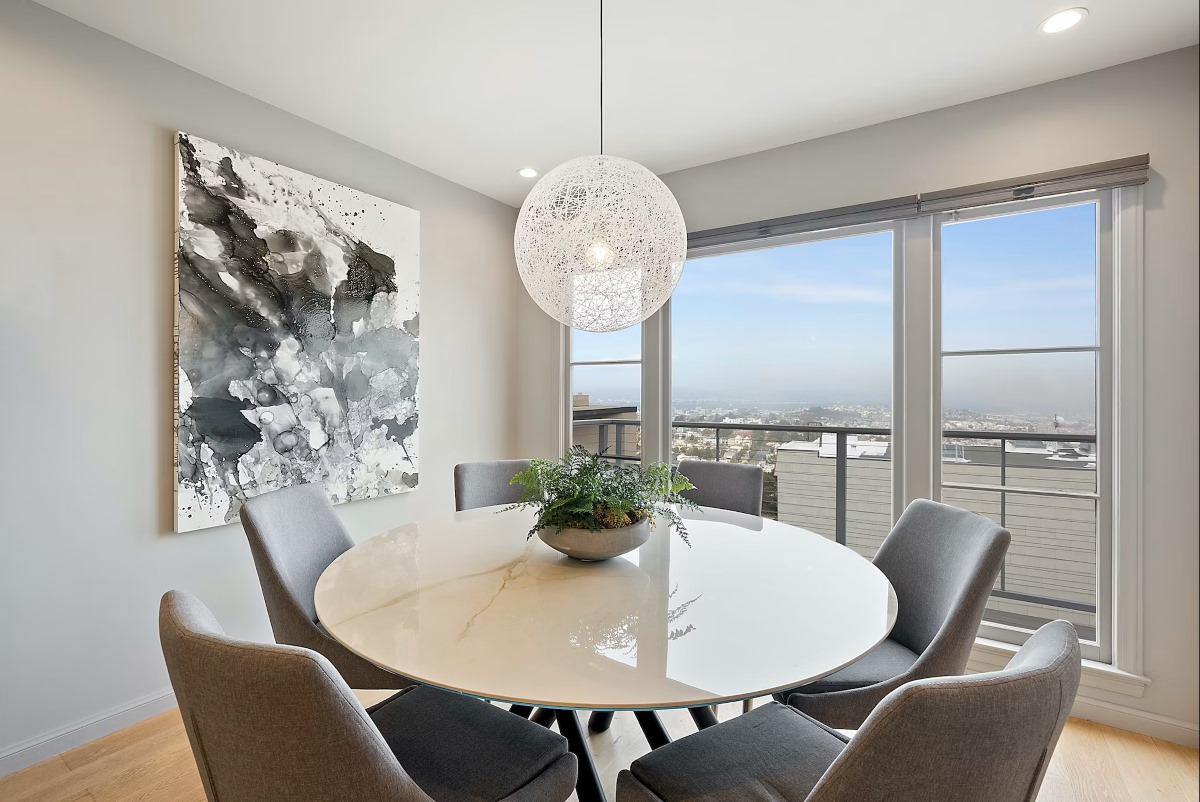
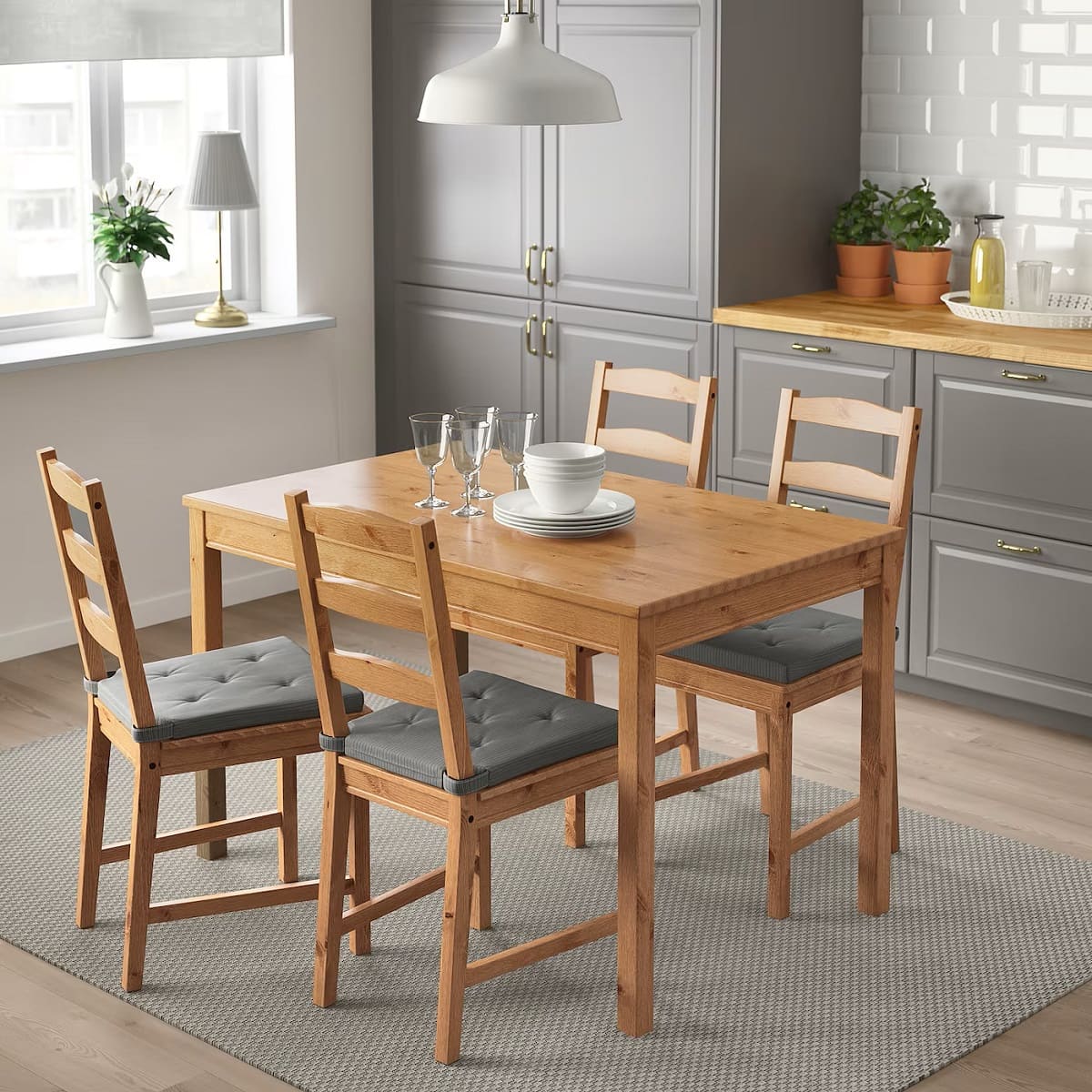

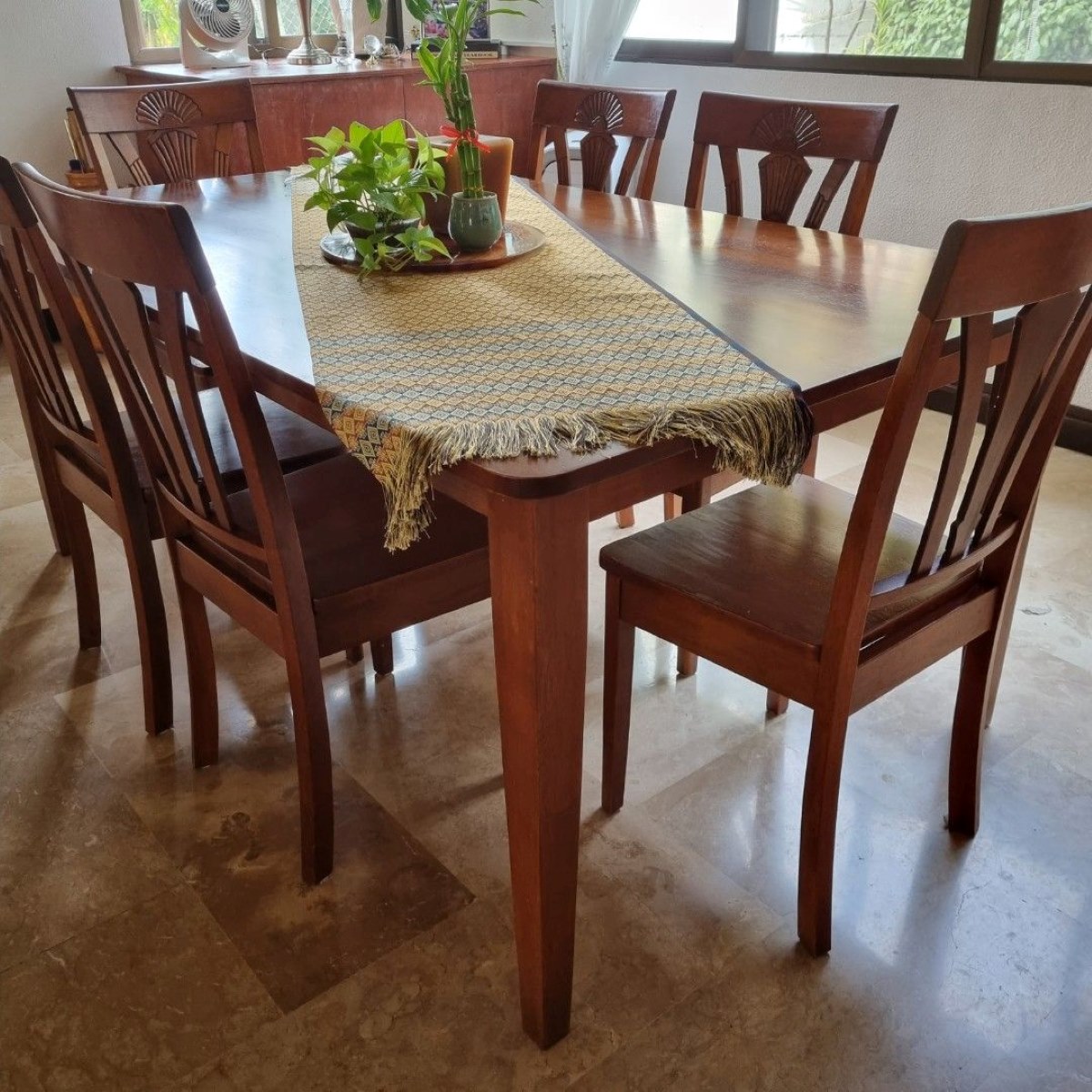
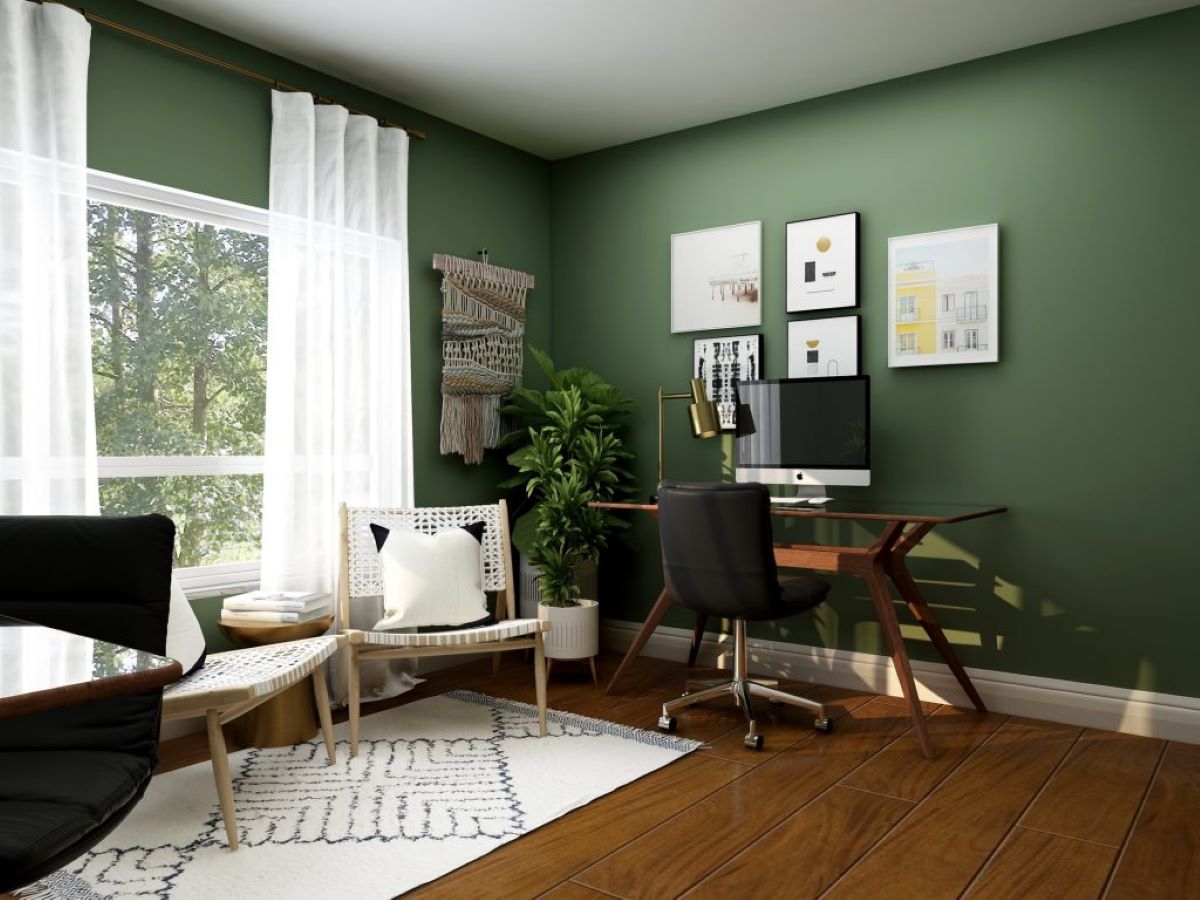
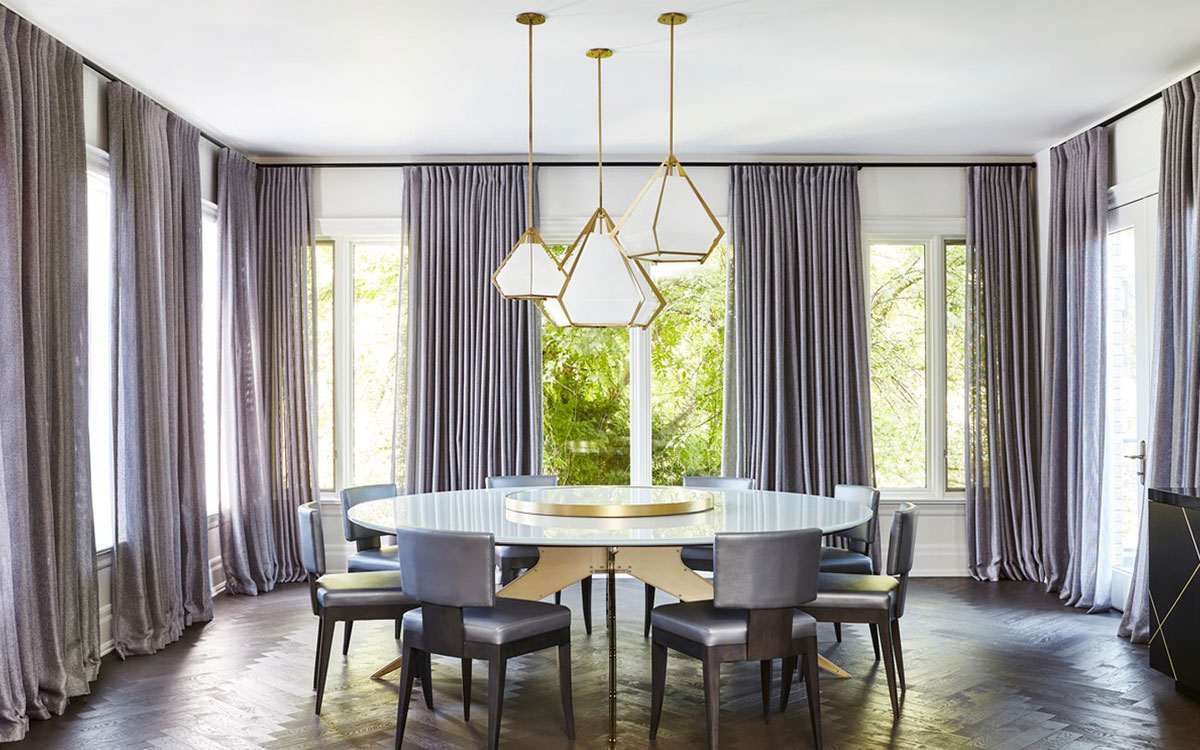
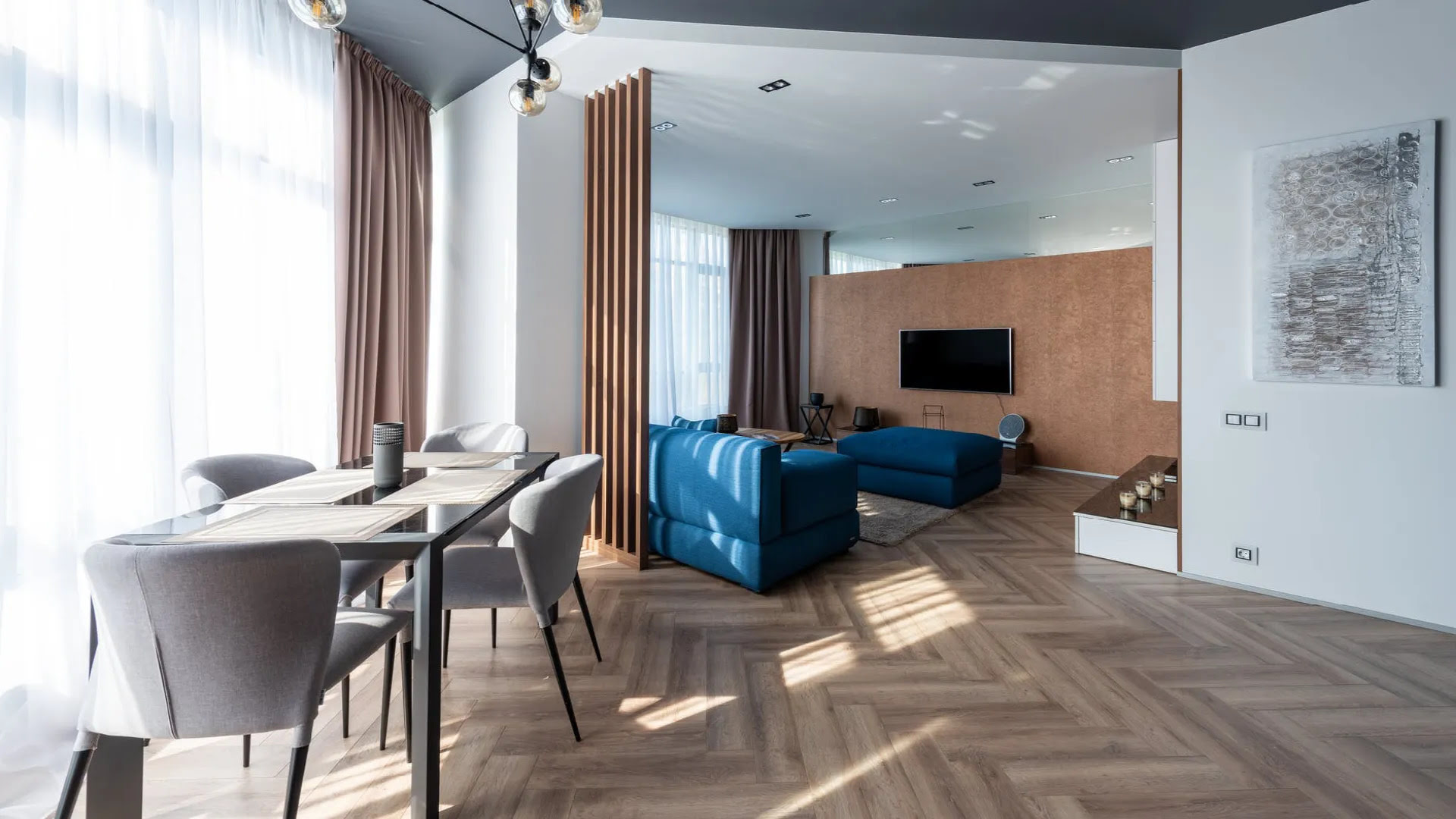

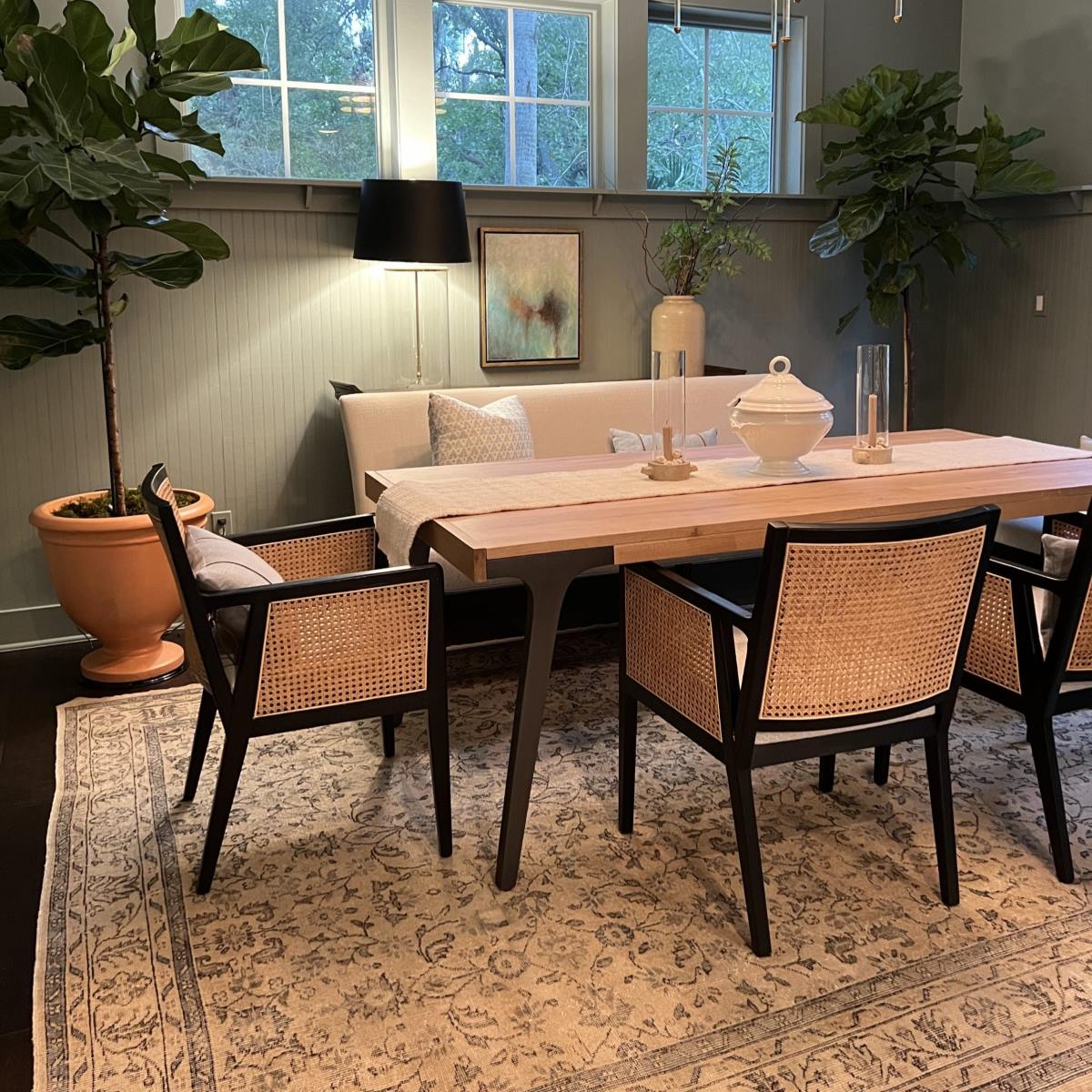
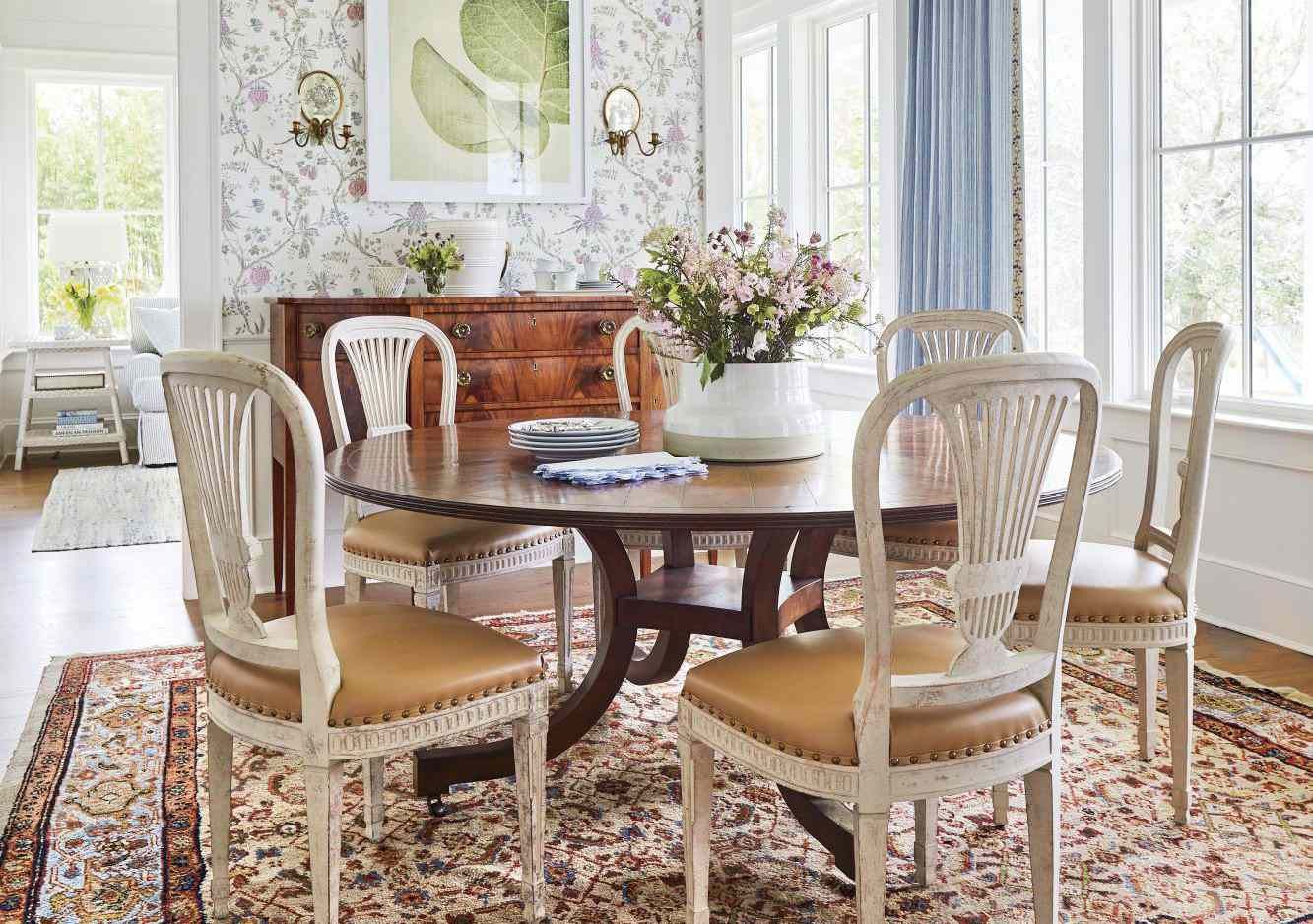

0 thoughts on “How Can You Decorate A Combined Living And Dining Room?”